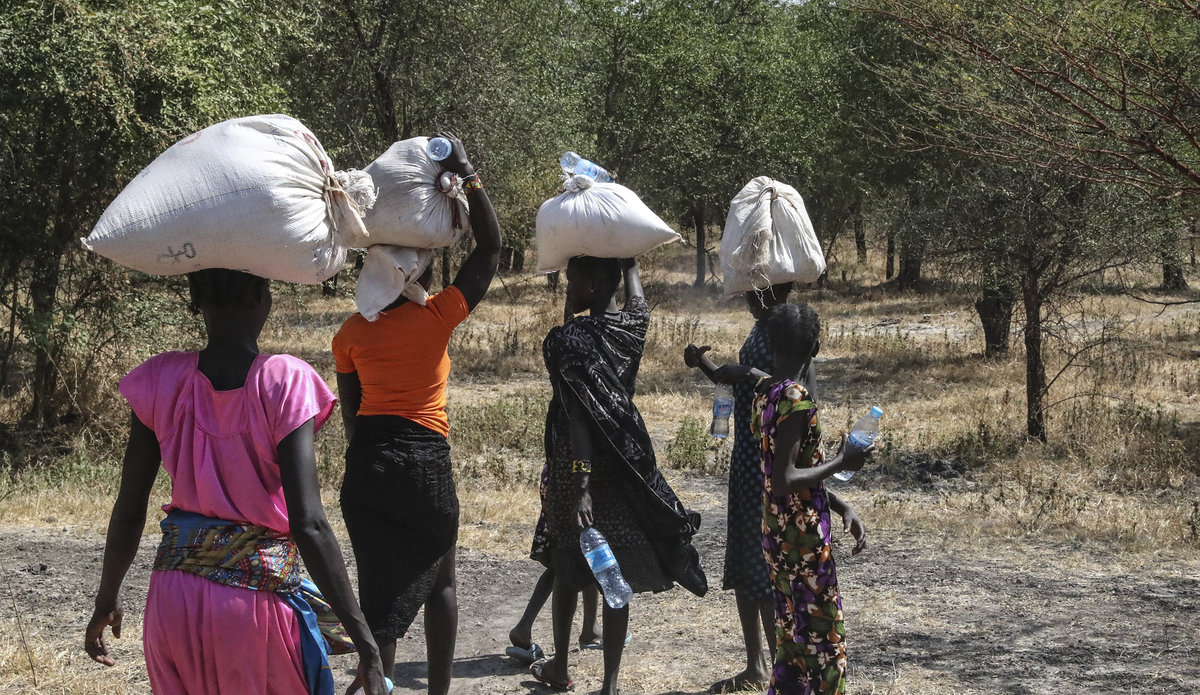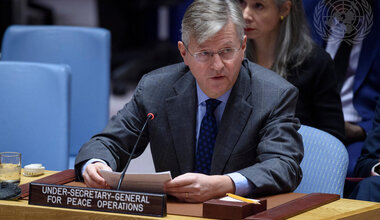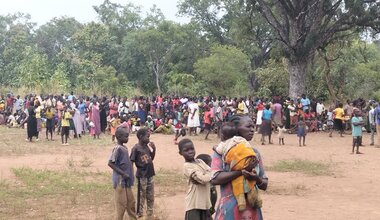Long walks for survival: A choice between food security and personal safety
Hundreds of women, young and old, gather and line up at a food distribution center, opposite Bentiu town’s main mosque.
They are from Nhialdiu, and have walked anywhere between 30 and 40 kilometers to get to this food distribution center.
Tired, many of the women are hungry, dusty, and thirsty. Some are sick, but must line up to get much-needed food assistance being distributed by Wilte Hunger Hilfe (World Without Hunger), which works in partnership with the United Nations World Food Programme to distribute food to communities in Rubkona.
Each of these women is tightly holding to their food ration card – the cards must be verified before they receive their food entitlement. Failure of verification means no food will be received irrespective of the distance walked.
Seated on her sack of sorghum, one of the women, an expectant mother, is getting ready to set off to return to Nhialdiu. She has received her food ration, and has to make it back home before dark. It’s already 4pm.
“I am here today to receive sorghum, because every month, we are receiving sorghum,” says this unnamed woman. “We came since morning and we spent all day in the hot sun. We are receiving this sorghum for our children, because in our area there is nothing there. Last time we were told that we would receive our food in Nhialdiu. Even some of us went back to Nhialdiu, and [those that went back] they will not receive food.”
Receiving the food in Nhialdiu would have been the best option, but according to Wilte Hunger Wilfe, the last food distribution in the area that would help tide the community for three months, happened in July 2017.
The access road to the area has since then been dogged by insecurity, and the difficult road condition has not allowed tracks and vehicles to ply, hence affecting public transportation to the area, and forcing many to walk.
“For us we walked from Nhialdiu; there is no transportation. As you know most of our children died in Liech State,” said another woman who has received her food ration.
Though hundreds walk the road daily for food, humanitarian organisations working in the area recommend that beneficiaries should not walk more than 5 kilometers to receive food rations.
“Normally we are supposed to be taking food closer to their villages or near where they live, but unfortunately, because of [the] road condition, we have been unable to reach Nhialdiu on a regular basis,” says Jean Mukurarinda, from Wilfe Hunger Hilfe.
“It is unfortunate that there is a population that has to move a long distance to come to this place,” he adds, saying, “that is why we are calling [on] people who are able to support us, so that this road from Bentiu to Nhialdiu is repaired. Once repaired and the peace continues reigning in this location, we will be able to take food to Nhialdiu.”
The United Nations Mission in South Sudan has, in a high-priority deployment, sent its British and Indian engineers to clear and level the road. Clearing the road will also allow public transportation to ply the route.
For the time being, though, as the communities continue to walk the road, humanitarian agencies project that they will start sending their trucks of food directly to the community in Nhialdiu, starting January.
For now, getting food continues to be an immense challenge for women in this South Sudanese Unity region. They must continue walking long distances, while navigating the danger of sexual violence that lurks in the bushes that throng the roads to food distribution points. The local government is being asked to provide security along several roads to ensure safe passage for those seeking food, as communities living here have not had a chance to cultivate their lands.
 UN
UN United Nations Peacekeeping
United Nations Peacekeeping





